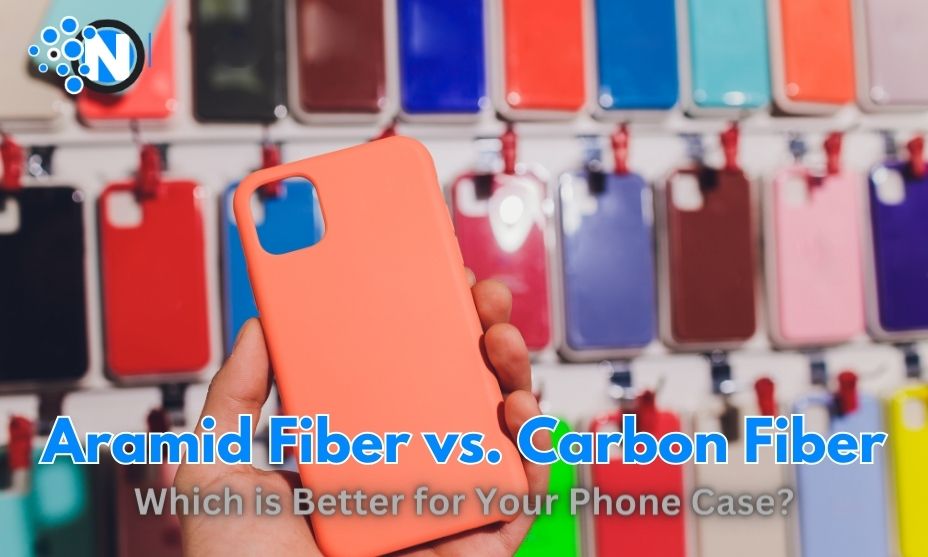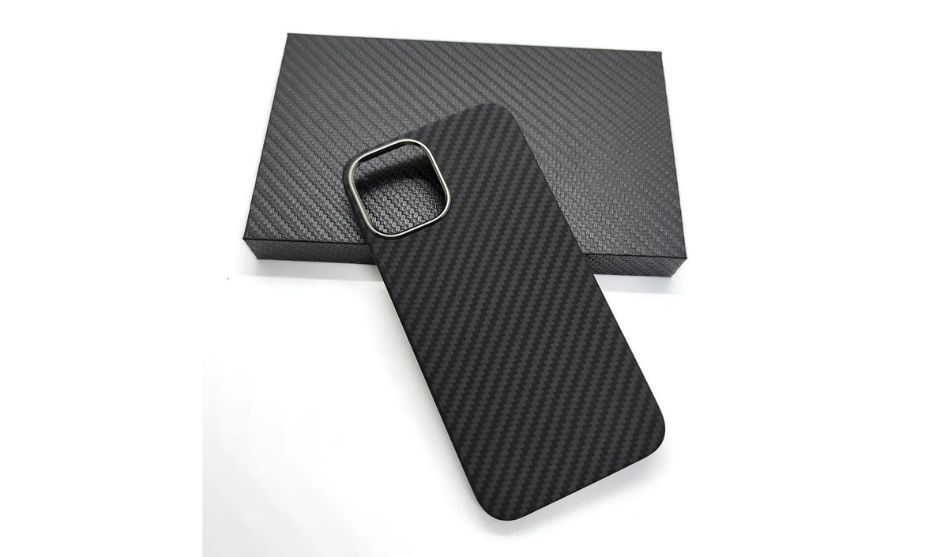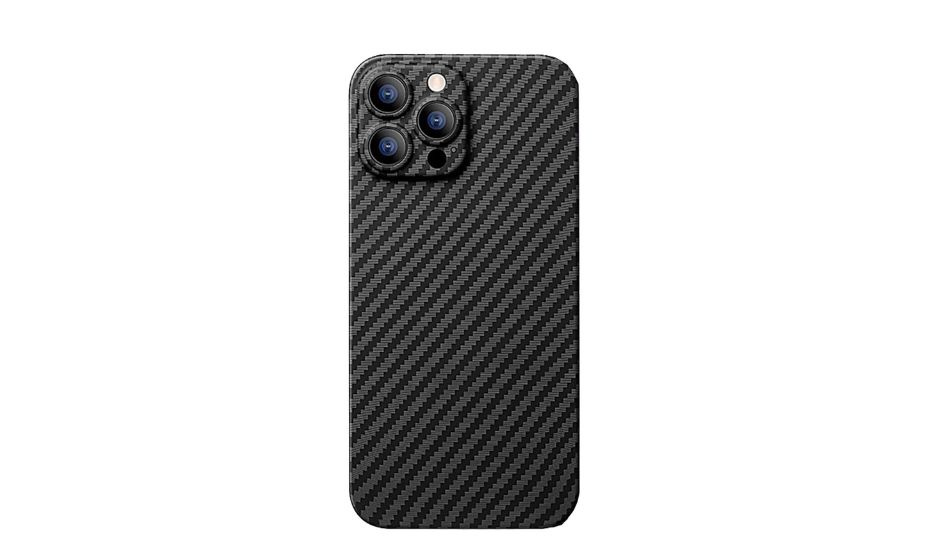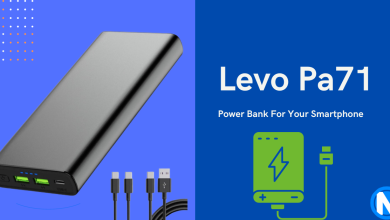Aramid Fiber vs. Carbon Fiber – Which is Better for Your Phone Case?

Our mobile phones have become nearly inseparable from us. With such a significant role in our daily routines, it’s crucial to ensure that our phones are well-protected. That’s where phone cases come into play. It’s not just about aesthetics or how they feel in our hands but also about durability and longevity. Among the myriad options available, two materials have emerged as front runners in the race for superior phone case construction – Aramid and Carbon Fiber.
Aramid, a heat-resistant and robust synthetic fiber, and Carbon Fiber, known for its lightness and strength, are both popular choices in the phone case industry. However, the question remains: which one takes the crown when it comes to crafting the perfect mobile case? In this article, we’ll comprehensively compare these two materials, evaluating their pros and cons to help you understand which one truly reigns supreme.
Aramid Fiber
Aramid, in its essence, is a high-performance polymer composed of long chains of synthetic polyamide. This composition lends itself to a unique blend of properties, making it a go-to material for several industries.
So, what makes Aramid fiber phone case special? Well, it’s the combination of these four key characteristics:
- Lightweight: Aramid is incredibly light. It adds practically no weight to your phone, making it comfortable to hold and carry around. It’s like having an armored shield that floats like a feather!
- Durability: Don’t let its lightness fool you. Aramid is tough. It’s resilient to everyday wear and tear, scratches, and drops. It’s designed to protect without compromising on the sleekness of your device.
- Flexibility: Aramid can bend but won’t easily break. This flexibility makes it an excellent choice for devices that need to withstand varying degrees of pressure or impact.
- Heat resistance: Here’s a cool fact – Aramid resists heat. It won’t warp or melt under high temperatures. This means an Aramid case will keep its cool even if your phone heats up during intensive use.

Carbon Fiber
Carbon Fiber is a material synonymous with high-end tech and sports gear. It is composed of thin strands of carbon atoms. These atoms are bonded in a crystal-like structure, offering a unique set of properties that make it stand out.
When we talk about Carbon Fiber, we’re looking at these key characteristics:
- Strength: Carbon Fiber is renowned for its exceptional strength. It’s one of the most robust materials available, capable of protecting your phone from impacts and accidents.
- Lightweight: Despite its strength, Carbon Fiber is incredibly light. It offers robust protection without adding unnecessary weight to your phone.
- Rigidity: Unlike Aramid, Carbon Fiber is quite rigid. This rigidity can be an advantage, providing a solid, sturdy feel to your device.
- Conductivity: Carbon Fiber has an interesting property – it conducts electricity. While not directly beneficial for phones, it’s a characteristic that sets them apart.
Read Also: Best Smartphones of the Year 2023

Comparing Aramid and Carbon Fiber for Phone Case
- When it comes to design and aesthetics:
Appearance: Both Aramid and Carbon Fiber have a unique, high-end appearance that adds a touch of luxury to your phone case. However, Carbon Fiber often has a more noticeable weave pattern, while Aramid tends to have a smoother finish.
Texture: Aramid is known for its soft, matte texture that feels comfortable in hand. On the other hand, Carbon Fiber typically has a glossier, more rigid feel.
- In terms of durability and strength:
Impact Resistance: Both materials offer excellent impact resistance, but Aramid’s flexibility gives it a slight edge when it comes to absorbing shocks.
Scratch Resistance: Carbon Fiber and Aramid resist scratches, ensuring your phone keeps its sleek look for longer.
Longevity: Both materials are durable, but the rigidity of Carbon Fiber may lend it more longevity than Aramid, especially in high-stress environments.
- Considering weight and portability:
Impact on Phone Weight: Aramid and Carbon Fiber are incredibly lightweight, so either choice adds minimal weight to your phone case.
Ease of Carrying: Both materials make for easy-to-carry phone cases. Thanks to their lightness and slim profiles.
- Discussing heat resistance and conductivity:
Tolerance to Heat: Aramid stands out here with its heat-resistant properties. Carbon Fiber can withstand normal temperatures but may not fare well under extreme heat.
Electrical Conductivity: Carbon Fiber conducts electricity, which doesn’t add much to a phone’s functionality. Aramid, being non-conductive, doesn’t have this characteristic.
- Lastly, looking at price and availability:
Cost Comparison: Carbon Fiber is generally more expensive than Aramid due to its complex manufacturing process.
Availability in the Market: Both materials are widely available, but you might find more options for Aramid due to its lower cost.
Real-World Applications and User Experience
If you go into testimonials and user reviews, you’ll find a mixed bag of experiences. Some users swear by the lightweight resilience of Aramid, while others can’t get enough of the rigid strength and premium feel of Carbon Fiber. As for popularity among consumers, it’s hard to declare a clear winner. Both materials have their fan base. Aramid is often favored for its heat resistance and flexibility, while Carbon Fiber is loved for its rigidity and luxurious feel. Ultimately, the choice between Aramid and Carbon Fiber comes down to personal preference and the specific needs of your device.
Making the Decision
When it comes to choosing between Aramid Fiber and Carbon Fiber phone case, personal preferences play a big role. Do you prefer a softer, more flexible feel or a rigid, glossy texture? Do you want a smooth finish or a distinctive weave pattern? Reflecting on what you value aesthetically can help guide your decision.
Use case scenarios are also crucial. If you’re often on the go in outdoor environments, the heat resistance of Aramid might appeal to you. If your phone takes a beating, the rigidity and strength of Carbon Fiber could be a better fit.
Budget constraints are a reality for many of us. Generally, Aramid tends to be more affordable than Carbon Fiber. If cost is a significant factor, Aramid is the way to go.
Lastly, consider future trends in phone case materials. With technology ever-evolving, new materials may come into play. Currently, both Aramid and Carbon Fiber hold strong positions in the market, but it’s always wise to keep an eye on upcoming trends.
Takeaway
Choosing the suitable material for your phone case is more than just about aesthetics. It’s about durability, comfort, heat resistance, and even cost. The material you choose can significantly impact your phone case’s lifespan and your daily experience.
That said, it’s crucial to make an informed decision. Consider your priorities and needs – is heat resistance vital to you? Or is rigidity a must-have? By understanding these factors, you can select a phone material that really suits you.
So, who takes the crown between Aramid and Carbon Fiber? While both have their merits, if we tally up the points considering versatility, heat resistance, and cost-effectiveness, Aramid Fiber is ahead in this race. But remember, the ultimate winner is the one that best fits your unique needs and preferences.




